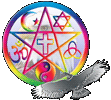 |
 |
||
|
|
||||||||||||||||||||||||||||||||||||||||||||||||||||||||||||||
 |
||||||||||||||||||||||||||||||||||||||||||||||||||||||||||||||
|
A Second 12 part Spiritual development Class. Presented By |
||||||||||||||||||||||||||||||||||||||||||||||||||||||||||||||
|
|
||||||||||||||||||||||||||||||||||||||||||||||||||||||||||||||
|
This page may be used for religious education by non-profit groups providing information content, copyrights and credits are not altered and/or deleted. Layout, graphics and design may be changed to suit individual needs. |
||||||||||||||||||||||||||||||||||||||||||||||||||||||||||||||
|
|
||||||||||||||||||||||||||||||||||||||||||||||||||||||||||||||
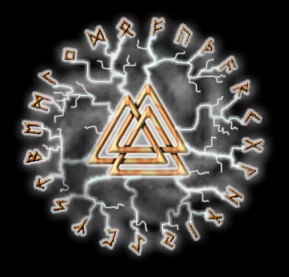 |
||||||||||||||||||||||||||||||||||||||||||||||||||||||||||||||
 |
||||||||||||||||||||||||||||||||||||||||||||||||||||||||||||||
|
I know I hung on that windswept tree, |
||||||||||||||||||||||||||||||||||||||||||||||||||||||||||||||
|
None gave me bread, Well being I won |
||||||||||||||||||||||||||||||||||||||||||||||||||||||||||||||
|
The Poetic Edda (circa 1200 A.D.) |
||||||||||||||||||||||||||||||||||||||||||||||||||||||||||||||
 |
||||||||||||||||||||||||||||||||||||||||||||||||||||||||||||||
 |
||||||||||||||||||||||||||||||||||||||||||||||||||||||||||||||
|
Runic alphabets first appeared among German tribes in central and eastern Europe during Roman times. Many of the Rune letters seem to have been borrowed from other alphabets, such as the Greek, the Etruscan, and the Early Roman alphabets. Some of the runes seem to be unique inventions. The earliest Runic inscriptions on stone are dated to the late 2nd century AD, although it is probable that Runic Alphabets had been in use for some centuries before. The runes were a very practical alphabet and developed out of necessity. Most adults in Roman age Europe possessed knives of some sort, and wood carving was often a highly prized skill. So creating an alphabet that could be easily carved with straight lines in wood (and later stone) was a natural development. Most Runic inscriptions simply identified the ownership or burial site of someone or something, and were as distinct as the Rune Master creating them. Early in their history, the Runes had very few writing rules or conventions. The Runes could be written right to left, left to right, or Boustrophedon (right to left on one line, left to right on the next, etc.). During Europe's Dark Ages, as the Roman/Latin alphabet become more dominant, the Roman convention of left to right became the rule. Also, early in their history, Rune letters were often reversed. Runes and their mirror images always represented the same phonetic values. The original Germanic Runic alphabet contained 24 letters. The first six letters of the alphabet spell out the word 'FUTHARK', which is often used when referring to the Runes. When the Runes spread north into Scandinavia, some letters were dropped and the alphabet was simplified to only 16 letters. Sometime between 400 and 600 AD, three Germanic tribes (the Anglos, the Saxons, and the Jutes) invaded Britain. They brought the Runes with them. Once in Britain, the Anglo-Saxon Runes were expanded to as many as 32 characters. By 800 AD the Runes were in use throughout much of western, central, and northern Europe. The Vikings carried the Runes west with them to Iceland and Greenland. Trade in eastern Europe spread the Runes into Hungary, Rumania, Poland, and parts of Russia. In the centuries that followed, as most of Europe adopted the Christian faith, the Runes slowly fell out of favour, replaced by variations of the Roman/Latin alphabet. One version of the Roman/Latin alphabet used in Anglo-Saxon England during the days before the Norman conquest contained some Runic letters, such as "þ" (thorn), based on the third letter of the Runic alphabet. During the Middle ages, as Christianity came to dominate Europe, fewer and fewer people were able to understand the Runes. Many non-Christian and pagan groups still continued to use the runes, such as the followers of the Druid religion. They were persecuted by the Christian authorities and their ways were demonized. Unable to read the Runes, church leaders believed them to be magic spells capable of unlocking the powers of evil. Since this time Runes have developed a bad reputation, and are often linked to the Occult and Satanism. Earlier in this century, the Nazis in Germany employed the Runes in their military insignia and propaganda, furthering to promote the sinister reputation of the Runes. On the bright side, J. R. R. Tolkien one variety of Anglo-Saxon Runes in his fantasy/adventure novel 'The Hobbit'. Tolkien used the Runes on maps and for assorted graphics on the hard-cover editions of the book. Tolkien used Runes to represent the writings of the Dwarves in his story. The Dwarves actually used a different Runic alphabet (called the Cirth or the Angerthas). Tolkien substituted the Cirth with the more familiar Anglo-Saxon Runes, just as he also substituted English for many of the languages of Middle earth such as Westron. Today, most people interested in Runes fall into two categories. Some are Historians studying pre Christian European cultures and languages. Or they may be medieval or fantasy RPG (Role Playing Game) players engaged in recreating aspects of pre Christian European cultures. |
||||||||||||||||||||||||||||||||||||||||||||||||||||||||||||||
 |
||||||||||||||||||||||||||||||||||||||||||||||||||||||||||||||
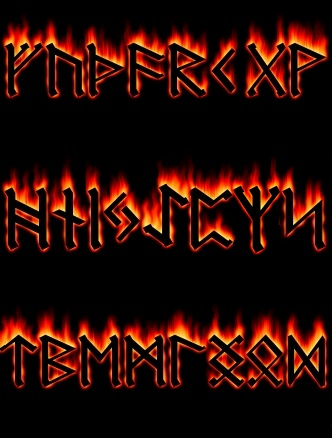 |
||||||||||||||||||||||||||||||||||||||||||||||||||||||||||||||
|
The above symbols make up the runic alphabet known as the 'futharks'. |
||||||||||||||||||||||||||||||||||||||||||||||||||||||||||||||
|
|
||||||||||||||||||||||||||||||||||||||||||||||||||||||||||||||
|
The 24 runes are divided into 3 sets of 8. Each of these sets is called an aett. Each set is often referred to by the name of a Norse God/ess (Freya's, Hagal's/Heimdall's, and Tyr's AEttir) In addition to having a written sigil, runes also have a sound that is sung to represent them. These rune songs are known as 'galdr', and any magickal use of runes should include them. Before we learn how to use the runes, we need to first understand the various meanings assigned to each rune. |
||||||||||||||||||||||||||||||||||||||||||||||||||||||||||||||
 |
||||||||||||||||||||||||||||||||||||||||||||||||||||||||||||||

|
||||||||||||||||||||||||||||||||||||||||||||||||||||||||||||||
|
||||||||||||||||||||||||||||||||||||||||||||||||||||||||||||||
|
Notes. |
||||||||||||||||||||||||||||||||||||||||||||||||||||||||||||||
|
+one way of identifying with the runes is to view each rune as bearing a 'power' or gift. Keep in mind the way a rune is facing has bearing on its meaning some runes may be reversed (upside down) when this happens the meaning is viewed as more negative or if a positive rune, (as in wunjo) viewed as to a lesser degree. |
||||||||||||||||||||||||||||||||||||||||||||||||||||||||||||||
v |
||||||||||||||||||||||||||||||||||||||||||||||||||||||||||||||
 |
||||||||||||||||||||||||||||||||||||||||||||||||||||||||||||||
|
||||||||||||||||||||||||||||||||||||||||||||||||||||||||||||||
|
Notes. +one way of identifying with the runes is to view each rune as bearing a 'power' or gift. Keep in mind the way a rune is facing has bearing on its meaning some runes may be reversed (upside down) when this happens the meaning is viewed as more negative or if a positive rune, (as in wunjo) viewed as to a lesser degree. |
||||||||||||||||||||||||||||||||||||||||||||||||||||||||||||||
 |
||||||||||||||||||||||||||||||||||||||||||||||||||||||||||||||
|
|
||||||||||||||||||||||||||||||||||||||||||||||||||||||||||||||
|
|
||||||||||||||||||||||||||||||||||||||||||||||||||||||||||||||
|
||||||||||||||||||||||||||||||||||||||||||||||||||||||||||||||
|
Notes. +one way of identifying with the runes is to view each rune as bearing a 'power' or gift. ^I do not use this rune as it is but a recent addition. it is supposed to symbolize, and unknowable knowledge etc. What is the purpose of a rune of no meaning? It is not entirely useless, being also the elemental rune of air. Keep in mind the way a rune is facing has bearing on its meaning some runes may be reversed (upside down) when this happens the meaning is viewed as more negative or if a positive rune, (as in wunjo) viewed as to a lesser degree. |
||||||||||||||||||||||||||||||||||||||||||||||||||||||||||||||
 |
||||||||||||||||||||||||||||||||||||||||||||||||||||||||||||||
 |
||||||||||||||||||||||||||||||||||||||||||||||||||||||||||||||
|
Now that we have a basic idea of the meanings of runes, we are now ready to see how the runes are read. |
||||||||||||||||||||||||||||||||||||||||||||||||||||||||||||||
 |
||||||||||||||||||||||||||||||||||||||||||||||||||||||||||||||
|
Let us look at a sample spread. |
||||||||||||||||||||||||||||||||||||||||||||||||||||||||||||||
 |
||||||||||||||||||||||||||||||||||||||||||||||||||||||||||||||
| The first thing that we need
is a good question. Like in all forms of divination, the question is the
key to deciphering the runes. All runes must be read in accordance to
the question.
Then take a moment to clear the mind, meditation works great for this and helps to quell the possibility of 'tainted' readings due to emotional baggage. There are basically 3 ways to draw the runes: 1. Reach into the 'rune bag' and grope around. until you feel that one rune that seems to jump into your hand. 2. Spread all of the runes face down on a table and pick them one by one, and; 3. Toss them into the air and read all the runes that land face up. Though the last is traditional, I personally prefer to draw them one by one, by the way, you will get more accurate readings if you always remember to place each rune you draw back into the bag before drawing the next. As you draw each rune try to keep the question in mind along with the placement of each rune. In other words, as you draw the first rune 'in the example above (past)' keep in mind the question and also that the first rune answers the question in regards to the past influences of said question, the next rune would be in regards to the present, and the last rune would speak of the future. Take your time and use your instincts and practice, practice, practice. On a related side note, I would like to add that the future is never set. Nothing is carved in stone. We are all born with the gift of free will and as such there is no such thing as 'fortune telling' that would mean we have no choice and all things in life are predestined. So the future in any true divination only means the most likely outcome. This is true of all systems. Tarot, geomancy, numerology, etc. hold no exceptions. Having said that, as mankind by nature is a creature of habit, it is safe to say that 9 times out of 10 the future divined will still hold sway. |
||||||||||||||||||||||||||||||||||||||||||||||||||||||||||||||
|
|
||||||||||||||||||||||||||||||||||||||||||||||||||||||||||||||
| The following is a chart of correspondence between the runes, geomancy glyphs, astrological signs and planets, although well beyond the scope of this lesson the serious student will find it very useful indeed. | ||||||||||||||||||||||||||||||||||||||||||||||||||||||||||||||
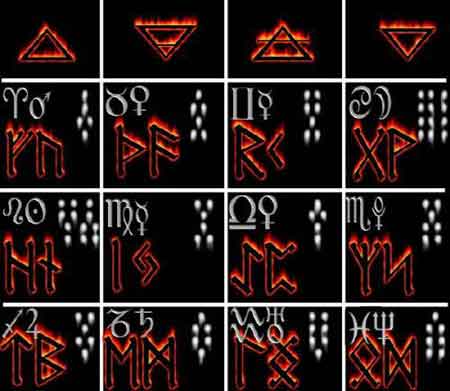 |
||||||||||||||||||||||||||||||||||||||||||||||||||||||||||||||

|
||||||||||||||||||||||||||||||||||||||||||||||||||||||||||||||
| There are also additional runes, with special meanings. | ||||||||||||||||||||||||||||||||||||||||||||||||||||||||||||||
 |
||||||||||||||||||||||||||||||||||||||||||||||||||||||||||||||
|
||||||||||||||||||||||||||||||||||||||||||||||||||||||||||||||
 |
||||||||||||||||||||||||||||||||||||||||||||||||||||||||||||||
 |
||||||||||||||||||||||||||||||||||||||||||||||||||||||||||||||
 |
||||||||||||||||||||||||||||||||||||||||||||||||||||||||||||||
|
||||||||||||||||||||||||||||||||||||||||||||||||||||||||||||||
|
To use a wishing stone, paint or carve your initials or personnel glyph on one side of a 'skipping' stone, and on the other side paint or carve one of the inguz runes, make a wish and carry said stone in your pocket or purse until your wish comes true. Alternatively, you may pitch the stone into a river, lake, wishing well, etc. To give your troubles to the wind. |
||||||||||||||||||||||||||||||||||||||||||||||||||||||||||||||
| R.T.Kaser | ||||||||||||||||||||||||||||||||||||||||||||||||||||||||||||||
 |
||||||||||||||||||||||||||||||||||||||||||||||||||||||||||||||
 |
||||||||||||||||||||||||||||||||||||||||||||||||||||||||||||||
|
||||||||||||||||||||||||||||||||||||||||||||||||||||||||||||||
 |
||||||||||||||||||||||||||||||||||||||||||||||||||||||||||||||
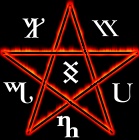 |
||||||||||||||||||||||||||||||||||||||||||||||||||||||||||||||
| £ÖRФßÕMÒ§¤KÞ¤§Ôtw this page courtesy of §håðów Ôƒ Thë wîtçh |
||||||||||||||||||||||||||||||||||||||||||||||||||||||||||||||
 |
||||||||||||||||||||||||||||||||||||||||||||||||||||||||||||||
| For more information you may like to visit. | ||||||||||||||||||||||||||||||||||||||||||||||||||||||||||||||
|
||||||||||||||||||||||||||||||||||||||||||||||||||||||||||||||
 |
||||||||||||||||||||||||||||||||||||||||||||||||||||||||||||||
 |
||||||||||||||||||||||||||||||||||||||||||||||||||||||||||||||
 |
||||||||||||||||||||||||||||||||||||||||||||||||||||||||||||||
|



